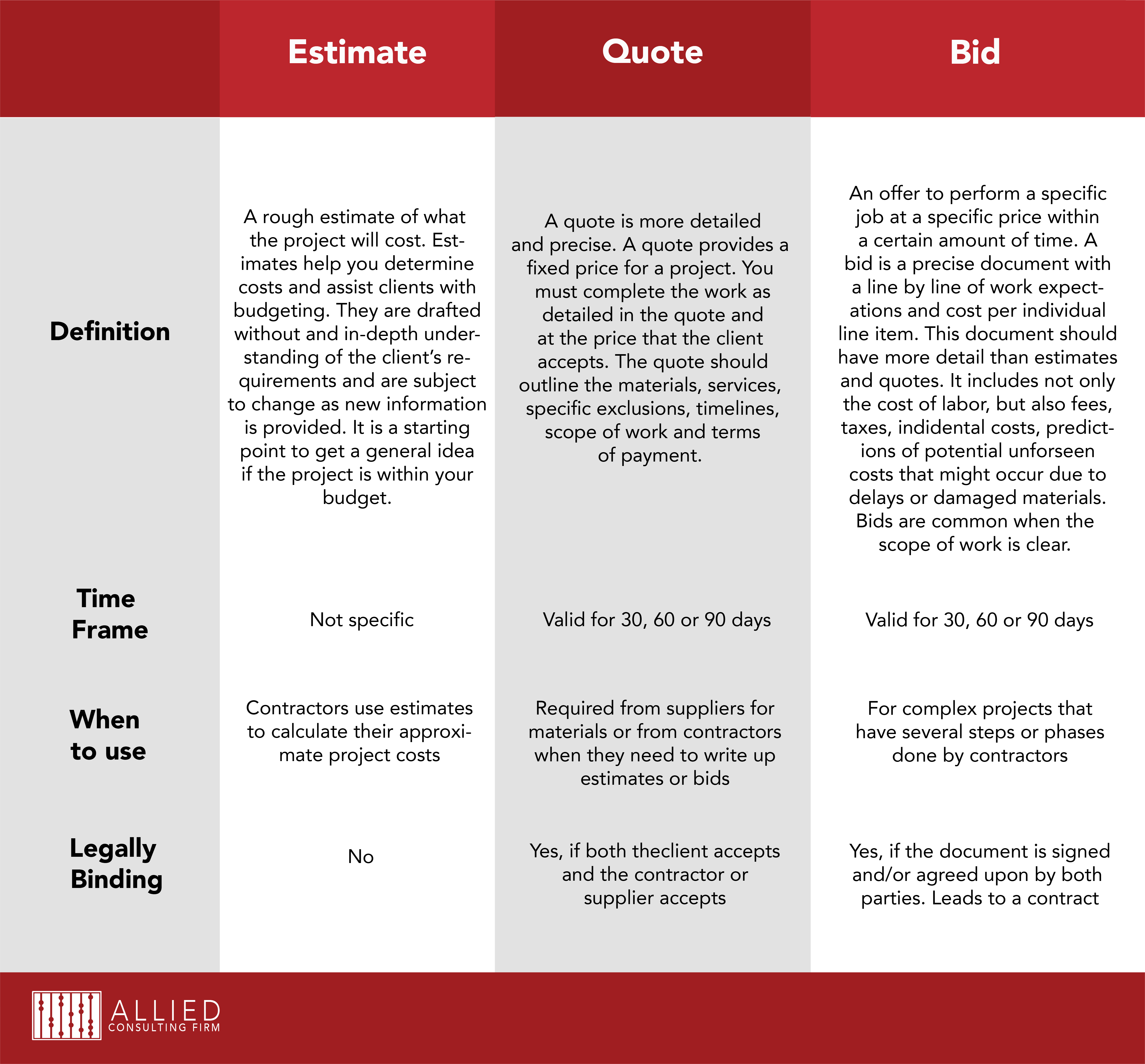The Difference Between an Estimate, a Quote, and a Bid.
What is the difference, when do I use which, and are they legally binding?
Estimates, Quotes, and Bids are the ways contractors, suppliers, or subcontractors use to outline costs for a construction project.
These terms are used interchangeably but they do have different meanings and should be used according to what your client is asking for in order to avoid mistakes.
Consider what the client wants and what kind of information they are giving you.
This includes:
• Cost estimates
• Complete breakdown of costs
• Itemized breakdown of services
• Timelines and completion dates
• Exclusions
• Project scope of work
What are the differences between these three and when should you use them?

Conclusion
Estimates, Quotes, and Bids are different and should be used based on the details and the information your client provides
For example, when a contractor asks you how much it costs to install drywall in a restoration project and the only information you are given is total sq. ft. You can conclude that based on the information given you can only give an estimate of how much the costs will be.
To Quote the same project you will need more information such as:
• Is the project residential or commercial?
• Is the job site occupied or not?
• Are there work hour restrictions?
• Does the job site have space to load and unload material?
• Is the house, or unit fully furnished?
• Is the unit or apartment on the first, second, or third level?
• What is the time of completion?
• What kind of drywall needs to be installed?
• Where is the project is located?
• How many units is the project? Or is it a single house?
As you see, the more detailed guidelines you have the more the project cost will increase.
Having more information allows you to Quote the project, at its total cost: material, labor, material handled, permits, inspections, time restrictions, and don’t forget your markup.
Once you establish your total price, you will specify the term of payment, the time frame of the completion of the project, and the due date of your quote which will be legally binding if both parties sign and accept the terms.
This seems obvious, but most all the time I see documents labeled as “Quote” when they are actually an “Estimate” or vice versa.
As we stated before Bids are much more detailed documents, the key difference is you bid for a specific job at a specific price with a certain amount of time. They are precise documents with a line-by-line list of work expectations and a cost per individual line item.
For example, a government agency is looking for a contractor to complete a project, so they will detail what they need and make these requirements available, So a Bid is a firm offer to a client. If your client is asking you for a Bid you will need the Set of Plans and Specifications.
Construction projects could be small or large based on how complex they are and the time to take its completion. Prime contractors which are the ones to work directly with the owner must put together the cost of the build for a new building or restore/renovate one, whichever is the case these contractors will ask for estimates, quotes, and bids to assemble the final price of their projects.
According to the planning stage of the project, they will be asking you for them. Sometimes they only have the concept of the product (building) or are waiting for the final design or final blueprints and specifications. As you know they will be selling part of the job that they will need to finalize their project.
Thus, make sure to submit the right documents based on the information available that they provide.

Leave A Comment